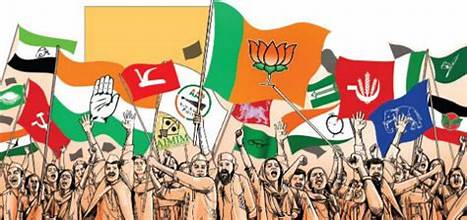In the hustle and bustle of the 18th Lok Sabha elections preparations, one cannot overlook the significance of understanding historical political milestones. Did you know which government in India held power for the shortest duration post-independence? Today, we delve into that intriguing piece of history.
The Genesis of General Elections
Post gaining independence from British rule, the first general elections were conducted in the year 1951-52. Subsequently, India witnessed prolonged periods of Congress dominance. However, a phase arrived where the political landscape witnessed numerous fluctuations, with coalition governments becoming a common occurrence. During this era, one government notably held power for the shortest duration. The leader at the helm of this government was Atal Bihari Vajpayee, who had to resign due to the inability to secure a majority in the house.
The Formation of the Short-Lived Government
In April-May 1996, the nation witnessed the formation of the 11th Lok Sabha after elections. No party, including BJP and Congress, secured a clear majority. Despite winning 161 seats, BJP found itself unable to form a government due to lacking adequate support in the house. Congress emerged as the second-largest party with 140 seats but chose not to form the government.
It’s noteworthy that before the elections, several leaders from the Congress party had branched out to form their own factions. A.N.D. Tiwari formed the All India Indira Congress (Tiwari), Madhavrao Scindia established the Madhya Pradesh Vikas Congress, and G.K. Moopanar founded the Tamil Maanila Congress. This division significantly impacted the electoral landscape, with most seats being claimed by regional parties. Out of 543 seats, regional parties secured victory in 129 constituencies, causing a dent in Congress’s share.
The Collapse of Atal Bihari Vajpayee’s Government
Despite the participation of eight national parties, thirty state-level parties, and 171 registered parties, no party secured a clear majority, with the number of candidates exceeding 10,000 for the first time in history. Consequently, President invited the largest party, Bharatiya Janata Party (BJP), to form the government. Atal Bihari Vajpayee assumed office as Prime Minister on May 16, 1996. However, his tenure lasted merely 13 days.
Following Vajpayee’s resignation, H.D. Deve Gowda of Janata Dal formed a new government on June 1, 1996, under the United Front coalition. However, this government too survived for a mere 18 months. Eventually, on April 21, 1997, Indra Kumar Gujral took oath as the Prime Minister. Despite external support from Congress, Gujral’s government lasted only around 11 months. Consequently, mid-term elections were necessitated in 1998.
A Glimpse into India’s Political Dynamics
The year 1998 witnessed Atal Bihari Vajpayee returning to power, forming a government with the National Democratic Alliance (NDA), which included a coalition with J. Jayalalithaa’s AIADMK. However, owing to Jayalalithaa withdrawing her support during a vote of confidence, the government collapsed once again. Nevertheless, in 1999, BJP managed to form a stable government with a coalition of 13 parties, marking Atal Bihari Vajpayee’s third term as Prime Minister. His tenure completed its full term, making him the first non-Congress Prime Minister to achieve such a feat. Currently, Prime Minister Narendra Modi stands as another non-Congress Prime Minister to have served two full terms.
FAQs:
- Why did Atal Bihari Vajpayee’s government resign after just 13 days?
- Atal Bihari Vajpayee’s government couldn’t secure a majority in the Lok Sabha, leading to his resignation.
- What led to the collapse of subsequent governments post-Vajpayee’s resignation?
- The subsequent governments faced challenges in securing stable alliances and maintaining parliamentary support.
- Were there any significant political realignments during this period?
- Yes, several leaders split from the Congress party to form their own factions, impacting electoral dynamics.
- Did any of the short-lived governments achieve notable policy milestones during their tenure?
- Given their brief tenures, these governments had limited opportunities to implement significant policies.
- How did the frequent changes in government impact India’s political landscape?
- The frequent changes highlighted the volatility of coalition politics and the challenges of maintaining stable governance amidst diverse political interests.




